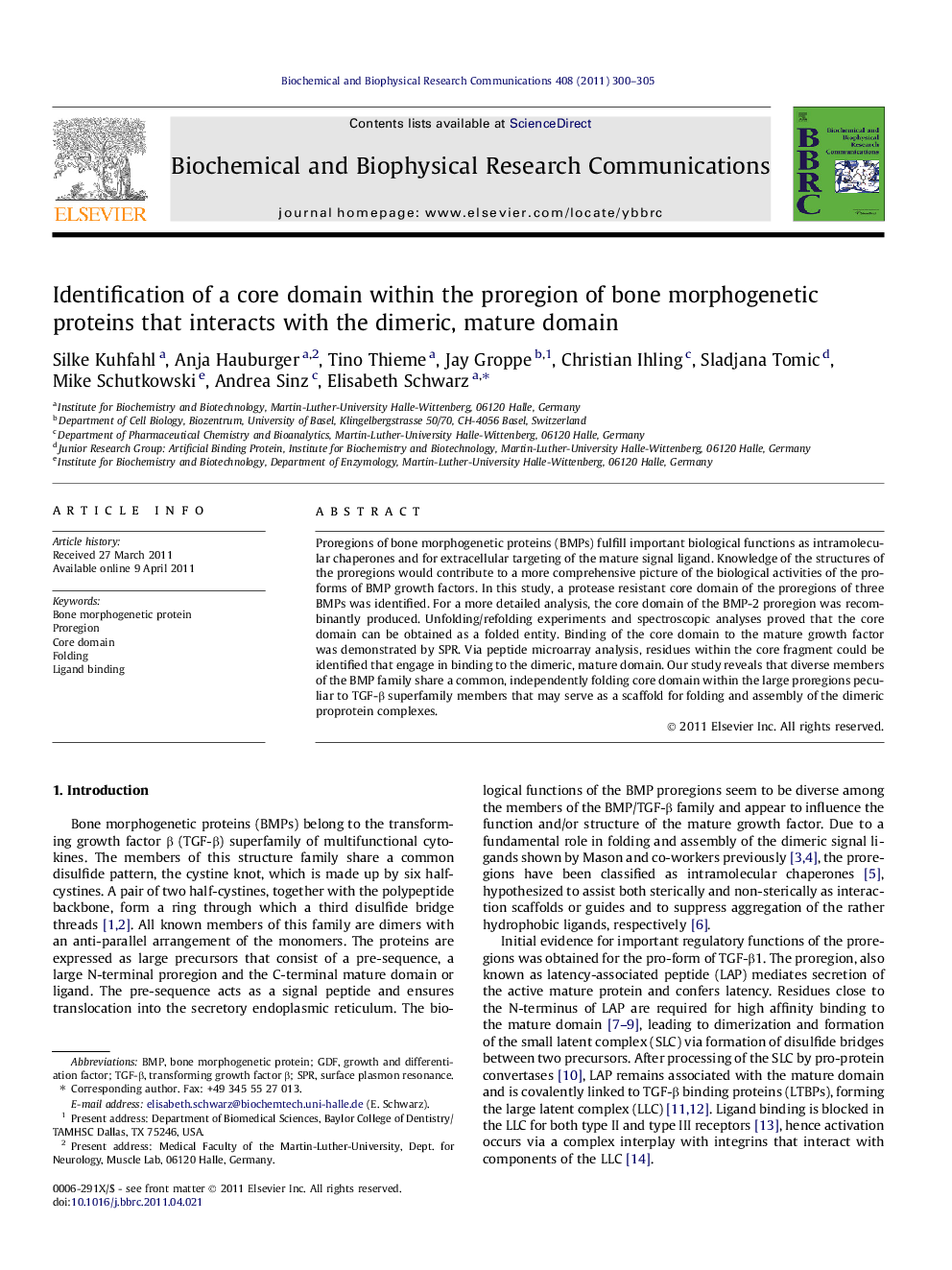| Article ID | Journal | Published Year | Pages | File Type |
|---|---|---|---|---|
| 1930646 | Biochemical and Biophysical Research Communications | 2011 | 6 Pages |
Proregions of bone morphogenetic proteins (BMPs) fulfill important biological functions as intramolecular chaperones and for extracellular targeting of the mature signal ligand. Knowledge of the structures of the proregions would contribute to a more comprehensive picture of the biological activities of the pro-forms of BMP growth factors. In this study, a protease resistant core domain of the proregions of three BMPs was identified. For a more detailed analysis, the core domain of the BMP-2 proregion was recombinantly produced. Unfolding/refolding experiments and spectroscopic analyses proved that the core domain can be obtained as a folded entity. Binding of the core domain to the mature growth factor was demonstrated by SPR. Via peptide microarray analysis, residues within the core fragment could be identified that engage in binding to the dimeric, mature domain. Our study reveals that diverse members of the BMP family share a common, independently folding core domain within the large proregions peculiar to TGF-β superfamily members that may serve as a scaffold for folding and assembly of the dimeric proprotein complexes.
► A common protease resistant core domain was identified within proregions of BMPs. ► Biophysical characterization revealed that the core domain was natively folded. ► The proregion core and mature domains interacted and binding sites were identified. ► The conserved cores may act as scaffolds to assist proprotein folding and assembly.
